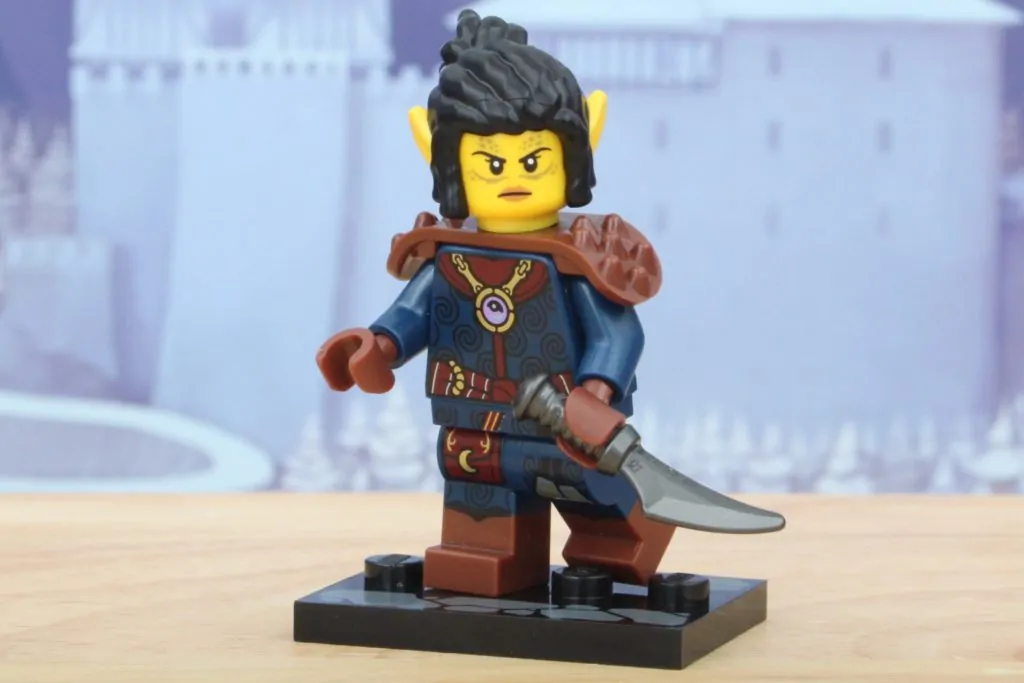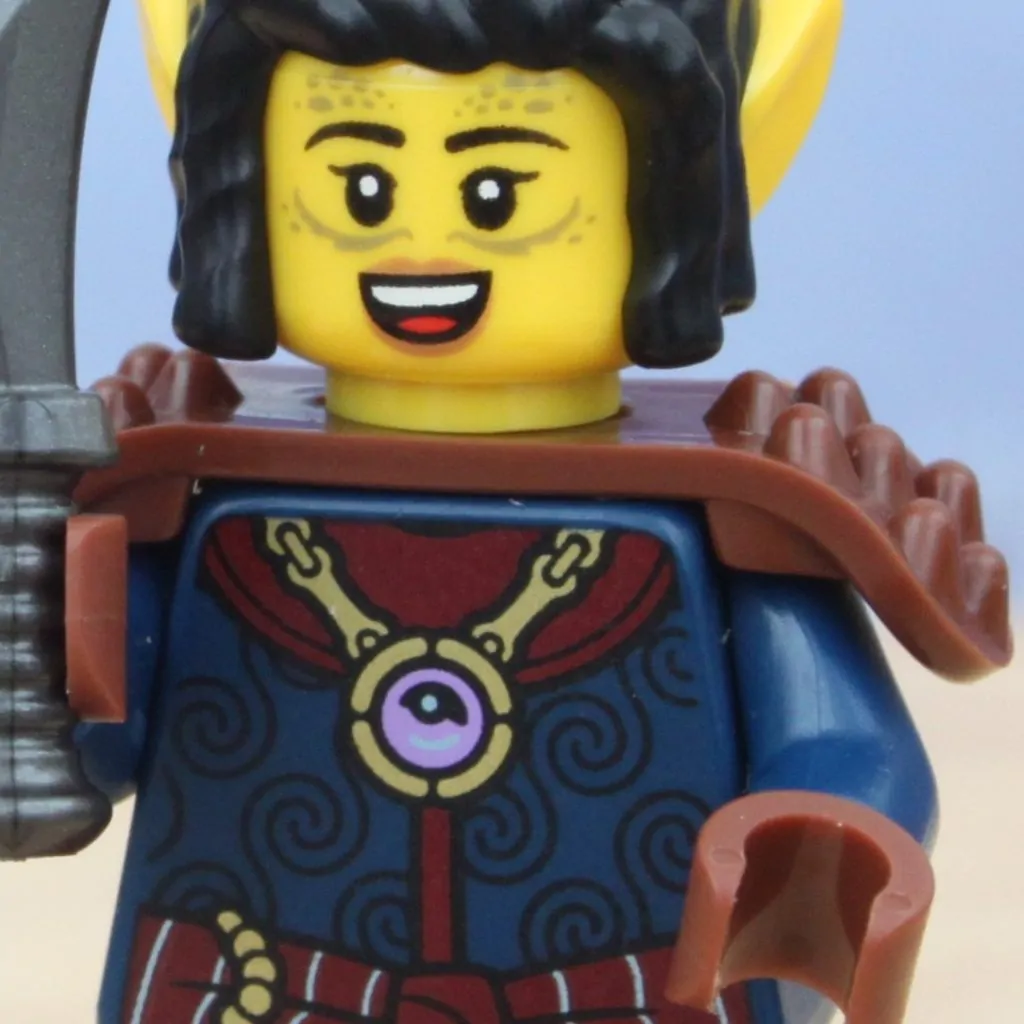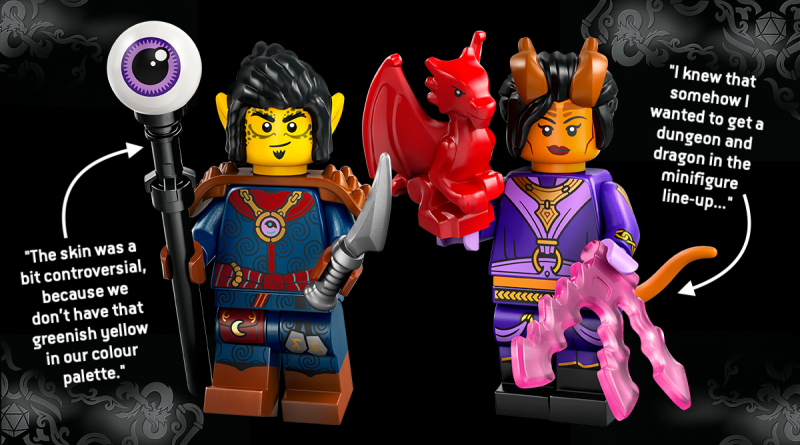LEGO Dungeons & Dragons designer secrets: Gith Warlock and Tiefling Sorcerer
From the Gith Warlock’s ‘controversial’ skin colour to the science behind the Tiefling Sorcerer, here’s everything you need to know about these two LEGO D&D minifigures direct from the designers.
The second part of Brick Fanatics’ deep dive into the latest blind-boxed series with LEGO Minifigures Creative Lead Esa Petteri Nousiainen and LEGO graphic designer Tore Magelund Harmark-Alexandersen tackles two more customisable heroes, getting into the nitty gritty behind the Gith Warlock and Tiefling Sorcerer. There’s plenty to unpack between these two characters, so dive in below for more fascinating insights.
If you haven’t yet got your hands on these minifigures, don’t forget that they’re available now – along with 10 others – in 71047 Dungeons & Dragons. You can pick out a complete set (or just your favourites) using the Brick Search app’s minifigure scanner.
Gith Warlock

71047 Dungeons & Dragons includes plenty of brand new elements, but the Gith Warlock’s hairpiece isn’t among them. This mould first debuted in 21348 Dungeons & Dragons: Red Dragon’s Tale earlier this year, and has here been recast in classic yellow, making this the only character in this series to stick to traditional minifigure colours.
“The Gith are known for having this yellowish skin,” Tore tells Brick Fanatics. “That was a bit controversial, because we don’t have a colour in our palette which is exactly that [shade of] greenish yellow. So we showed various versions to our partner, Wizards of the Coast, and they picked this one.”
“I think one super nice benefit of going with the standard minifigure yellow is that you can actually use the headgear with standard minifigures,” Esa says. “You can now have a yellow elf if you want.” The realisation strikes Tore in real time.



“I never thought of that actually – good point!” he adds, before explaining how he approached the minifigure’s unique face prints. “The Gith also have these markings around the eyes, and they have some very sharp features – but of course, it’s a minifigure, and its head is basically a cookie jar, so we always need to abstract a bit and purify things. But I’m really happy with how it turned out.”
The Gith race is only one half of the equation that makes up this minifigure. He or she (you can choose through the two included heads) is also a warlock, a magical and mysterious Dungeons & Dragons class. And like every one of the customisable heroes in 71047 Dungeons & Dragons, the narrative qualities of that class ended up informing the artistic direction of its outfit.
“These magic users are usually focusing all their trust in their magical powers,” Tore says. “And due to their long studies in the catacombs and basements, they’re not necessarily the most fit physically, so heavy armour would probably be out of the question. But he still has a leather armour piece, and I remember our conversation that you could put that on to the full leather armour character to give them a bit more volume.”



Tore is here referring to the leather armour torso and legs, which you can find in the Aarakocra Ranger and Elf Bard respectively, speaking further to the mix-and-match nature of this Collectible Minifigures series. None of these minifigures exist in isolation – but that doesn’t mean their torso decorations are generic and absent of character, either.
“There’s this chain with an orb in it, and various details like the little cloth that’s been twisted and used as a belt, and a pouch with a moon symbol on it,” he continues. “Then there’s these two rune stones, which warlocks draw magic energy from. And there’s a pattern that I’m quite happy with, printed in black on the dark blue, and you can only see it if you reflect it against the light. It’s something hidden that needs to be revealed.”
“On the backside there are a couple of potions, which are a big thing in D&D – health potions, magic potions, poisons and whatnot,” Esa adds. “You can also see some of these potions on the backside of the Dragonborn Paladin. And then one more hint towards mystery is this key on the back of the warlock. Keys are a big thing in D&D too – you find keys everywhere.


“They might open chests, they might open doors. So we were like, ‘Yeah, let’s give one of the characters a key.’ And it ended up being here on the warlock, because that’s also a little bit mysterious. What is that key? Where does it go? What does it open? These little details are fun to add.”
The key might not be physically represented in 71047 Dungeons & Dragons, but the Gith Warlock does come with a couple of accessories. As well as a brand new dagger (two of which are actually included with each Gith Warlock), the minifigure includes a spooky staff.
“The eyeball staff is not any one specific weapon from D&D lore, but it is a symbol for warlocks,” Esa explains. “There are different types of eye-related accessories in D&D, and it adds this layer of mystique to warlocks. They are shrouded in mystery.”
“I think it also underlines the power of the warlock, which is a collaboration with an otherworldly being from a different dimension,” Tore says. “A singular floating eye is a good icon of this weird thing, because we don’t have that in our world, so to speak.”
Tiefling Sorcerer

While the Gith Warlock technically only has one new piece, the Tiefling Sorcerer actually includes three brand new elements: a hairpiece with horns, a magic missile spell and a tiny red pseudodragon. And while that fire-breathing animal is not necessarily specific to either the class or race here, it was part of Esa’s own quest to very literally include dungeons and dragons in 71047 Dungeons & Dragons.
“When we greenlit Dungeons & Dragons, I knew that somehow I wanted to get a dungeon and dragon in the minifigure line-up,” Esa says. “And of course, we can’t build a big dragon, so we decided to make a little sculpted pseudodragon. And then we were like, ‘Okay, how do we do the dungeon?’ And we printed some dungeon on the baseplate. This was something that we really wanted to include somehow: dungeons and dragons.”
“Sorcerers are known for the magic running in their family blood, so I actually think it’s a perfect fit with the dragon, which is also known for having magic running through its veins,” Tore adds, before explaining how the Tiefling Sorcerer is also one of the best examples of colour theory at play in 71047 Dungeons & Dragons. “Purple is a bit of a darker, more mysterious and more aggressive colour, especially next to that powerful orange.”



“Purple is often related to magic, because it is a kind of mystical colour,” Esa says. “You don’t see it in nature that often. I would say that no matter where you go in the world, purple is not very natural. But a funny thing I learned quite recently about purple is that it’s actually a colour that doesn’t exist in a way. You perceive purple because of a lack of green.
“There are basically some receptors in your head that see red and blue, and somewhere in between, there is something that detects green. And if there is no green, then it combines the red and blue – so it’s like a lack of green. So purple works well with magic.”
“Magic is also unnatural, so I guess that makes sense,” Tore chimes in. According to the designer, the Tiefling Sorcerer’s outfit is then an extension of the traits established by their colour scheme. “We added some jewellery and armour details that have these sharp and jagged elements to make it look more aggressive.”



“This really goes into the fantasy zone – there was no realism behind it,” Esa confirms. “This jewellery kind of looks like armour, so it slightly covers the shoulders here with tiny pieces, and doesn’t really provide protection, but it’s something that you could see in a fantasy setting. That was kind of the driver for this design.”
Fancy adding either or both of these minifigures to your collection? Head here to find out more about how the Brick Search minifigure scanner can help you pick them out in stores. And don’t forget to check out the rest of our deep dives into the D&D minifigures so far…
Support the work that Brick Fanatics does by purchasing your LEGO using our affiliate links.
Author Profile
- I like to think of myself as a journalist first, LEGO fan second, but we all know that’s not really the case. Journalism does run through my veins, though, like some kind of weird literary blood – the sort that will no doubt one day lead to a stress-induced heart malfunction. It’s like smoking, only worse. Thankfully, I get to write about LEGO until then.
Latest entries
Latest16/09/2024LEGO confirms more than 100 sets retiring in 2024
Latest16/09/2024New LEGO Friends River Camping Adventure gift-with-purchase available now
Features14/09/2024Johnny Thunder doesn’t belong in LEGO City – here’s where he fits better
January 2025 sets14/09/2024Series 27 is rumoured to resurrect one of the rarest LEGO Pirates minifigures







Does anybody know, why they didn’t choose the warlock to have a speudo dragon? Warlocks have the boon of the chain ability which allows them to summon an pseudo dragon while the Tiefling sorcerer has no connection to this creature…
So they confirmed that the tiny red dragon is just a tiny red dragon and not a pseudodragon? Interesting. I wonder if it’s the hatchling from the egg Merry Rumwell stole in Red Dragon’s Tale.
Also, did they say the sorcerer’s magical effect piece is, in fact, magic missile?
It is magic missile! Just double-checked the transcript and they did say it is a pseudodragon too, good catch – I’ll add that in.